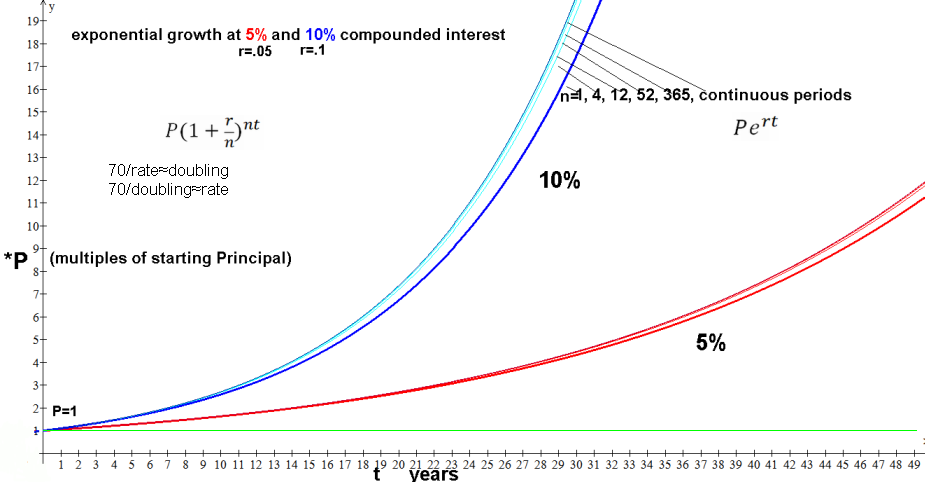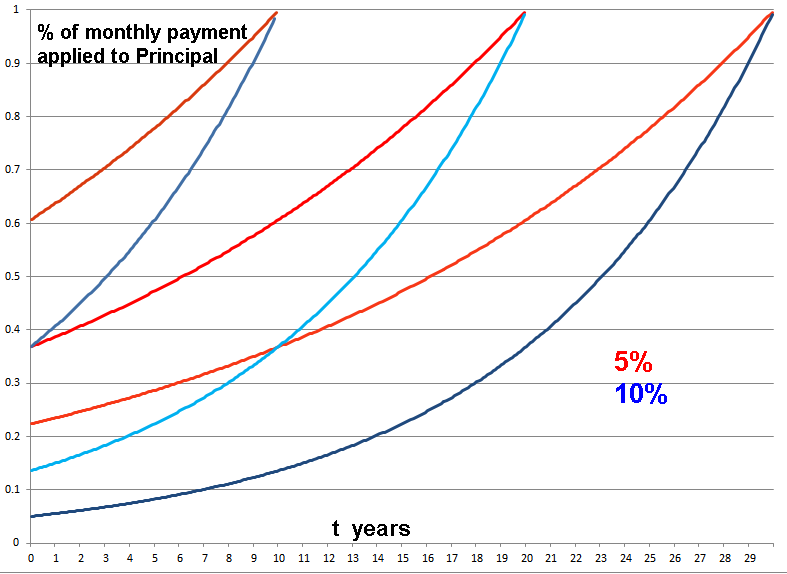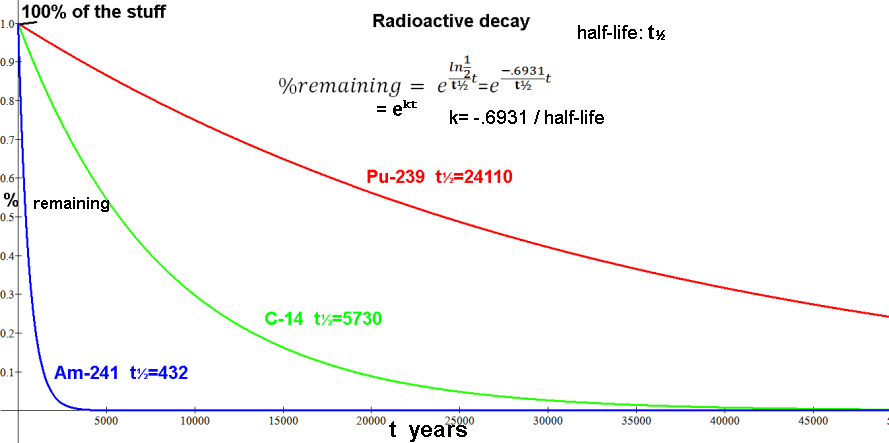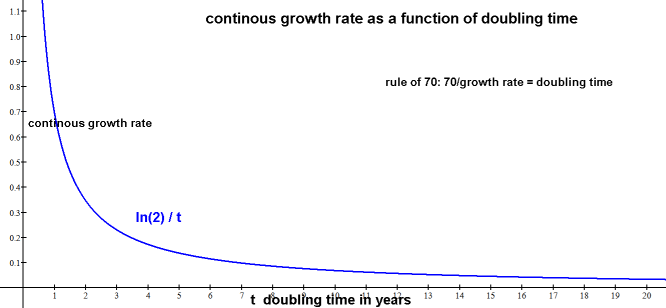FV=P(1+r)t once per year
FV=P(1+r/n)nt (n compoundings per year)
P is starting principal, t is years, r is interest rate, n is the compoundings per year.

10% is 1.1x 5% is 1.05x
Compounded interest
FV=P(1+r)t once per year
FV=P(1+r/n)nt (n compoundings per year)
P is starting principal, t is years, r is interest rate, n is the compoundings per year.

10% is 1.1x
5% is 1.05x
Annuity growth

P is periodic payment, t is years, r is interest rate, n is payment periods per year, usually 12.

Mortgage: percent of payment that goes towards Principal
Rates of 5% and 10% with 10, 20, 30 years.

Radioactive decay.
Carbon-14 half-life: 5730 years --> ln(.5)/5730=-.000121 --> e-0.000121t
Plutonium-239 half-life: 24,110 years --> ln(.5)/24110=-.00002875 --> e-0.00002875t.
Americium-241 half-life: 432 years --> ln(.5)/432=-.001604 --> e-0.001604t.
The identical atoms "know" to decay. No cause? fundamental randomness of the universe.

Radioactivity calculations
Doubling time and growth rate.

Newton's law of cooling.
Cooling (i.e. loss of heat) of something is proportional to the difference between its
temperature and the ambient temperature (i.e. the temperature of its surroundings).
Say a kettle of 100° boiling water is taken off the stove and put into a
very large refrigerator/freezer that is at 0°. (and ocasionally stirred).
After 10 minutes the temperature of the water is measured to be 80°.
Ambient temperature: Ta=0
Temperature at time 0: T0: T(0)=100
Temperature at time 10: T(10)=80
Temperature at time t: T(t)=Ta+(T0-Ta)e-tk
Temperature at time 10: T(10)=Ta+(T0-Ta)e-10k
Solving for k: 80=0+(100-0)e-10k k=.0223
T(t)=100e-.0223t
half-life: ln 2 = kt t=31.08
Time of the excess temperature to halve from any value is always the same.
(Excess temperature is T0-Ta)
The heat (energy) has a "half-life".

Another example: something hot at 80° placed into 20°.
After 15 minutes it is 65°.
T(15)=Ta+(T0-Ta)e-15k
Solving for k: 65=20+(80-20)e-15k k=.0192
T(t)=20+60e-.0192t
half-life: ln 2 = kt t=36.1

Newton's Law of cooling/warming calculations